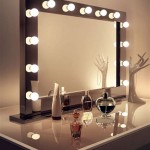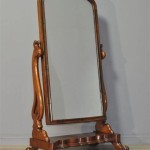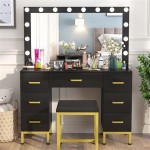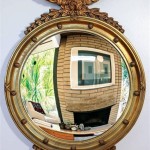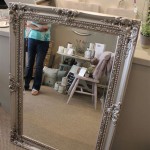Can Acrylic Paint Be Used On Mirrors?
Decorating mirrors with acrylic paint can be a cost-effective way to personalize home decor. However, achieving durable and visually appealing results requires understanding the nuances of acrylic paint and its interaction with mirror surfaces. This article will explore the feasibility, methods, and important considerations for painting on mirrors with acrylics.
Key Considerations for Painting on Mirrors with Acrylics
While acrylic paint can technically be used on mirrors, its inherent properties and the smooth, non-porous nature of mirror surfaces present challenges for achieving lasting adhesion. Several factors play a crucial role in the success of this application.
Surface Preparation
Proper surface preparation is paramount for ensuring the longevity of the paint application. Mirrors, being typically smooth and non-porous, offer limited adhesion for acrylic paints. Cleaning the mirror surface thoroughly is the first step. This removes dust, fingerprints, and any residues that could compromise adhesion.
Primer Application
Applying a suitable primer specifically designed for glossy surfaces is strongly recommended. This primer creates a slightly textured surface that allows the acrylic paint to adhere more effectively. Choosing a high-quality primer designed for glass or smooth surfaces is crucial for achieving optimal results.
Paint Selection
Selecting the appropriate acrylic paint also contributes significantly to the project's success. High-quality acrylic paints offer better pigment concentration and durability. Specifically, water-based acrylics designed for glass and tile applications are often formulated to adhere to smooth, non-porous surfaces better than standard acrylic paints. Choosing paints that are lightfast also helps maintain the vibrancy of the colors over time, preventing fading from exposure to light.
Sealing the Painted Design
Once the acrylic paint has dried and cured, sealing the painted design is essential for protecting it from scratches, moisture, and general wear. A clear sealant, specifically designed for glass and acrylic surfaces, provides a protective barrier, helping to ensure the longevity of the artwork. This sealant also helps to prevent the paint from chipping or peeling over time.
Techniques for Applying Acrylic Paint on Mirrors
Different techniques can be employed to apply acrylic paint to mirror surfaces, each offering unique aesthetic results. Careful consideration of the desired effect and the artist’s skill level is critical when choosing the appropriate method.
Freehand Painting
Freehand painting allows for artistic expression and customized designs. This method requires a steady hand and practice. Artists can use various brushes, sponges, or even their fingers to apply the paint, creating unique textures and effects. Thinning the acrylic paint with a suitable medium can improve flow and control, particularly for intricate designs.
Stenciling
Stenciling offers a precise and repeatable method for applying designs onto mirrors. This technique involves placing a stencil against the mirror surface and applying paint over the open areas. Stenciling provides clean lines and is particularly useful for intricate patterns or for creating multiple identical designs. Using repositionable adhesive stencils can be helpful for ensuring the stencil stays in place during the painting process.
Reverse Glass Painting
Reverse glass painting involves painting the design on the back of the mirror, creating a unique effect where the design is viewed through the glass. This method requires careful planning and execution, as the layering of paint needs to be done in reverse order. It offers a protected, glossy finish, as the paint is effectively sealed behind the glass.
Troubleshooting Common Issues
Despite careful preparation and execution, challenges can arise when painting on mirrors. Understanding these potential issues and their solutions can help ensure a successful outcome.
Paint Peeling or Chipping
Paint peeling or chipping can occur if the mirror surface was not properly cleaned or primed, or if the paint itself is not compatible with the surface. Ensuring the mirror is clean and free of any residues before priming and painting, and selecting a high-quality primer and paint specifically designed for glass surfaces, can minimize this issue. Applying thin, even coats of paint, allowing each coat to dry completely before applying subsequent layers, can also improve adhesion.
Uneven Paint Application
Uneven paint application can result from using improper painting techniques or unsuitable brushes. Practicing on scrap glass or a less visible area of the mirror can help refine the technique and ensure a smoother application. Using appropriate brushes and tools for the desired effect, and ensuring the paint is properly thinned (if necessary), can also contribute to a more uniform finish.
Cleaning Painted Mirrors
Proper cleaning methods are essential for maintaining the appearance and longevity of painted mirrors. Harsh chemicals and abrasive cleaning tools can damage the painted surface. Using a soft, damp cloth with a mild detergent solution is generally recommended for cleaning. Avoid using abrasive cleaners or scrub brushes, as these can scratch the paint or sealant.

Painting On Mirrors An Easy Step By Guide

Painting On Mirrors An Easy Step By Guide

Painting On Mirrors An Easy Step By Guide

How To Decorate A Mirror With Acrylic Paint Pens Diy Painting

Acrylic Paint On Glass How It Works I Nova Color

Painting With Mirrors Simple Process Art One Time Through

Painting On Mirrors An Easy Step By Guide

Acrylic Paint On Glass A Guide To Painting With

How To Paint A Mirror With Pictures Wikihow

Acrylic Paint On Glass A Guide To Painting With

